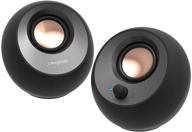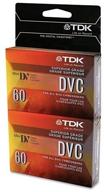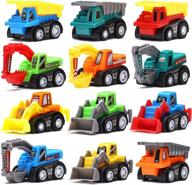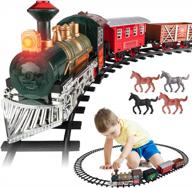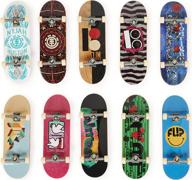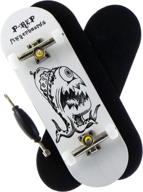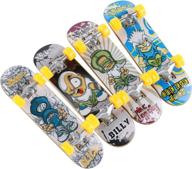Choosing the Right RC Plane for You
Getting started in the hobby of RC planes can be exciting but also overwhelming with all the options out there. Here are some key considerations when choosing your first RC airplane to help ensure success.
Skill Level
The first thing to think about is your skill level. As a beginner pilot, you'll want to look for a plane that is stable and easy to fly. More advanced fliers can opt for faster planes with more complex designs.
Beginner Planes
- High wing trainers - Very forgiving and stable in flight
- Gliders - Designed for gentle flying and soft landings
- Almost-Ready-to-Fly (ARF) - Prebuilt models that just need finishing
Intermediate and Advanced Planes
- Low wing planes - Faster but still relatively easy to fly
- Aerobatic planes - For more extreme maneuvers like loops and rolls
- Scale replicas - Realistic models of actual planes
- Warbirds - Styled after famous fighter planes
Radio System
You'll need a compatible transmitter and receiver to control your plane. For beginners, a basic 4+ channel radio system is recommended. More advanced fliers may prefer 6+ channels for added control.
| Radio System | Description |
|---|---|
| 4+ channels | Controls rudder, elevator, throttle, ailerons |
| 6+ channels | Adds flaps, retracts, more functions |
Power Source
Electric and fuel/gas powered engines are the most common options. Consider your flying goals and budget when deciding.
- Electric - Clean and quiet but limited flight time. Better for park flying.
- Gas - Longer flights but needs more maintenance. Better for wide open areas.
Ready-to-Fly vs. Kit
Ready-to-Fly (RTF) planes come pre-assembled so you can fly almost immediately. Kits require some assembly and let you customize more.
RTF Benefits
- Get flying quicker with minimal setup
- Great for beginners still learning
Kit Benefits
- Satisfaction of building a plane from parts
- Can choose custom components
- Learn how planes are put together
Whichever you choose, be sure to inspect the model closely and familiarize yourself with all the components before that first flight.
Conclusion
The key is finding an RC plane suited to your current skill level and budget. Seek input from experienced fliers at your local hobby shop or flying field before purchasing. While it takes practice to become a pro RC pilot, the right beginner plane will have you soaring in no time.
Types of Planes for Beginners vs Experienced RC Pilots
When starting out in RC planes, choosing the right aircraft is crucial to learning to fly safely. While experienced pilots have more options, beginners should stick to trainers and other stable models first.
Beginner RC Planes
As a new pilot, you'll want a forgiving plane that can handle some mistakes as you learn. Some top choices include:
Trainers
- High-wing for stability
- Flat bottom fuselage for controlled landing
- Slower flying speed
Gliders
- gentle flying nature
- long soaring flights
- good practice reading air currents
Almost-Ready-to-Fly (ARF)
- pre-built and quick to get airborne
- less construction complexity
Intermediate RC Planes
After getting experience with an initial trainer, intermediate pilots can advance to:
Low-Wing Aircraft
- faster speed
- inverted flying capabilities
- more nimble maneuvering
Scale Models
- realistic replicas of full-size planes
- variety of skills to master
Top products in 🛩️ Airplanes
Advanced RC Planes
Experienced pilots can take on more complex and specialized models like:
Aerobatic Planes
- perform loops, rolls, and other acrobatics
- lightweight with powerful motor
- optimized flight controls
Warbirds
- detailed fighter plane replicas
- rill of flying combat models
Jets
- incredible scale speed and performance
- gas turbine or electric ducted fan power
- exciting but expert-level flying
Tips for Choosing the Right Plane
- Consider your current skill level
- Talk to experienced pilots for input
- Find a good mix of stability and performance
- Make sure your radio can handle the model
- Have patience as your abilities progress
Conclusion
From trainers to advanced jets, there's an RC plane for every skill level. The key is matching the model to your capabilities as a pilot. Push yourself to develop new skills but also stay within limits to have fun and fly safely.
Plane Size and Flight Duration Considerations
When selecting an RC plane, an important factor to consider is the model's size and how it affects flight time. Larger planes can typically stay in the air longer, while smaller models are more limited by battery capacity.
Small Planes
Great for tight flying spaces, but have short flight times.
- Wingspan: < 46 inches
- Weight: < 3 pounds
- Typical flight: 5-8 minutes
Best for: Park flying, indoor use, beginners learning to fly.
Similar products
Medium Planes
Balance distance and duration; good blend of portability and air time.
- Wingspan: 46 inches - 6 feet
- Weight: 3-8 pounds
- Typical flight: 8-15 minutes
Best for: Wide range of flying such as sport flying, aerobatics, scale models.
Another interesting products
Large Planes
Maximum flight time but need space for takeoff and landing.
- Wingspan: 6 - 10+ feet
- Weight: 8+ pounds
- Typical flight: 15-25+ minutes
Best for: Cross country and high altitude flying, cargo carrying.
Factors Affecting Flight Duration
- Amount of available thrust
- Battery capacity or fuel tank size
- Plane weight and wingspan
- Weather conditions like wind
Increasing Your Plane's Air Time
On Electric Models
- Use high mAh LiPo batteries
- Carry spare battery packs
- Use a lower kV rated motor
- Increase wingspan for more lift
On Fuel/Gas Models
- Optimize fuel mixture for efficiency
- Increase fuel tank capacity
- Use a 2-stroke motor for more power
- Add wing area to reduce power needed
Finding the Right Balance
While long flights are nice, don't sacrifice too much maneuverability by going too big. Find an RC plane that balances your needs for flight time, transportability and exciting handling.
Conclusion
Consider your specific flying goals and locations when choosing a model size. Larger planes have endurance on their side for extended flights, while smaller models offer greater portability and thrilling aerobatics.
Ready-to-Fly vs Build-It-Yourself Kit Options
When buying an RC plane, one of the first decisions is whether to get a ready-to-fly (RTF) model or a kit that requires assembly. There are pros and cons to each approach.
Ready-to-Fly RC Planes
As the name suggests, RTF planes can go straight from the box to the air:
- Pre-assembled and factory tested
- Usually just attach wings and landing gear
- Fly in hours instead of weeks or months
Great for:
- Beginners focused on learning to fly quickly
- Pilots wanting convenience and less building
RC Plane Kits
Kits offer the experience of building your own aircraft:
- Plans, raw materials, hardware included
- Instruction manual guides assembly
- From partial kits up to covering and painting
Great for:
- Modelers who enjoy the construction process
- Pilots wanting full customization
Kit Difficulty Levels
- Almost-ready-to-fly (ARF) - partial assembly required
- Short kits - include raw wood, ribs, hardware
- Full kits - all parts and accessories included
Factors to Consider
- Your building experience and skills
- Time commitment for construction
- Customization preferences
- Kit complexity vs pre-built simplicity
Conclusion
Ultimately there's no right or wrong option. RTF planes offer instant gratification, while kits provide the joy of creating your own model. Choose the path that appeals most to your interests and abilities.
Tips for Improving Your RC Plane Flying Skills
Becoming an adept RC pilot takes practice, but there are techniques you can use to accelerate the learning process.
Find a Good Flying Site
Look for a large open area away from trees, buildings and other obstructions. This gives you ample room to takeoff, fly circuits, and land safely.
- RC airfields and clubs often have ideal flying sites
- Grassy fields in parks can work for smaller models
- Consider wind patterns and avoid turbulent conditions
Master Takeoffs
A smooth controlled takeoff sets the tone for the entire flight.
- Accelerate on the runway until lift-off speed is reached
- Climb out gradually at a steady angle and speed
- Avoid climbing too steeply after takeoff
Practice Controlled Hovering
Being able to hover maintains position and keeps options open in the air.
- Make minor corrections to hold position against winds
- Descend and ascend vertically when hovering
- Strafe sideways or rotate by adjusting control inputs
Refine Your Landing Approach
A stabilized landing approach is key for smooth touchdowns.
- Set up a consistent traffic pattern and glide slope
- Keep wings level and speed constant on final approach
- Flare just before touchdown to bleed off excess speed
Master Basic Maneuvers
Practice exercises like loops, rolls, and stall turns will make you a better pilot.
| Maneuver | Description |
|---|---|
| Inside loop | Fly vertically upwards into inverted loop |
| Barrel roll | Roll plane around axis while continuing flight direction |
| Figure 8 | Fly plane in a horizontal 8 pattern |
Challenge Yourself Gradually
Push your limitsincrementally to expand your skills over time.
- Increase flight speeds
- Try new maneuvers and aerobatics
- Fly in various wind conditions
- Advance to more complex control inputs
Conclusion
Improving as an RC pilot requires regular practice and continually upping your game. Set milestones, film training flights, and learn from experienced fliers to reach the next level.
High Resolution Rc Toys Icons For Print Or Digital Media Free
If you're looking for high-resolution RC toys icons that you can use for print or digital media, iStockphoto LP has a great selection of royalty-free vector graphics and clip art. Here are some of the options you can choose from:
All of these illustrations are available in high-resolution and can be used for both print and digital media. They are also editable, so you can customize them to your needs. Using these high-quality RC toys icons can save you time and effort in creating your own graphics, while also giving your projects a professional look. Plus, since they are royalty-free, you can use them without worrying about copyright issues.
Chatgpt Stops Generating Code In The Middle
If you are experiencing issues with ChatGPT stopping in the middle of generating code or sentences, there are a few things you can try. Here are some tips based on the search results:
Overall, while ChatGPT can be a useful tool for generating code and sentences, it is important to keep in mind its limitations and potential risks. By following these tips and best practices, you can improve your experience with ChatGPT and generate more accurate and useful code.






